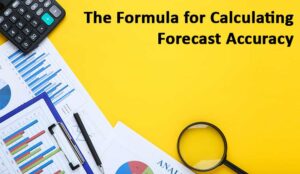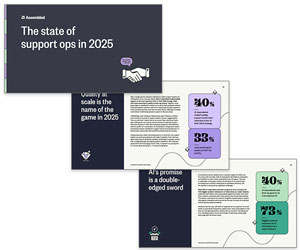Understanding your forecast accuracy is essential. Without it, it’s impossible to know whether your predictions are reliable – or misleading.
In this instalment of our video series on the key concepts behind accurate forecasting, Call Centre Helper’s Jonty Pearce explains why accuracy should always be measured at the interval level, and why some common methods miss the mark.
Video: Forecasting Fundamentals: Forecast Accuracy and Intervals
Watch the video below to hear Jonty explain what you need to know about forecasting – focusing on forecast accuracy and intervals:
Don’t Be Fooled by Daily Totals
It’s easy to assume that if your daily forecast is close to actual volumes, you’re doing well. But that can hide a much bigger problem.
“So, for instance, let’s have a look at different times across the day. You see here that you’ve got 105 calls offered in this time period, and you forecast 102, 128, and 135.
And if you add that up for the course of the period, this is just for the morning, you see that we’ve got 1,360 calls coming in, and we forecast 1,362.
If you actually looked at those two figures, you’d see that the error is only two calls out for the whole day, a difference of 0.1%, and yet it’s wildly different across the day. Here it’s sort of 14 /15% out.”
Imagine you forecast 1,362 calls for the day, and 1,360 actually arrived. That’s only two calls out – a 0.1% error. Seems accurate, right? Look closer.
In the morning intervals, the forecast could be off by 14–15% at certain times. That creates staffing issues. You may be over-resourced when things are quiet and overwhelmed when it’s busy.
Focus on Intervals
To get meaningful insight, you need to measure forecast accuracy by interval – not just by the day.
This means checking your predictions for each 15- or 30-minute block throughout the day.
That’s where real service levels live or die, as daily totals are simply too broad to highlight where things go wrong.
Use the Right Measure: MAPE
The best technique for assessing interval-level accuracy is called Mean Absolute Percentage Error, or MAPE.
“One of the things that you need to watch out for is forecast accuracy, and there are number of different ways of working out forecast accuracy.
One of the best techniques is called Mean Average Percentage Error, or MAPE. Effectively what you need to do is measure forecast accuracy at the interval level, and not at the day level.”
Here’s how it works:
- First, calculate the difference between your forecast and actual numbers for each interval.
- Ignore whether it’s over or under – treat all errors as positive numbers.
- Then, calculate the average error as a percentage of actual volumes.
MAPE gives you a balanced view of how far off your forecasts are, regardless of direction, as Jonty continues:
“So one of the things you need to do is look at the average absolute error. Absolute, whether it’s plus or minus, it comes out as a number, and then you work out what the average distance is.
This is effectively the measure you need to use. It is called the Mean Absolute Percent Error, and it’s the best way to calculate forecast accuracy.”
It’s simple, effective, and trusted in forecasting disciplines worldwide.
The Bottom Line
If you’re only looking at daily figures, you might be missing serious problems in your forecast. Instead, focus on the intervals – that’s where the real customer experience is shaped.
Using MAPE to measure forecast accuracy at the interval level will help you build a more realistic, responsive staffing model. And that means better service, fewer surprises, and stronger confidence in your plan.
If you are looking for more great insights from Jonty, check out these next:
- Why You Need to Check Your Forecasting Tools
- Don’t Push Occupancy Beyond 85%
- Why You Need to Account for AHT Variation Across the Day
Author: Jonty Pearce
Reviewed by: Robyn Coppell
Published On: 24th Nov 2025 - Last modified: 27th Nov 2025
Read more about - Video, Forecasting, Videos, Workforce Management (WFM)









































